Friday, January 12 (morning)
Tutorial #1: 2020: Toward Practical Quantum Networks
8:30 - 12:30 | Room: Reno
Instructors:
 Marcello Caleffi
Marcello Caleffi
University of Naples, Italy
Marcello Caleffi received the Dr. Eng. degree summa cum laude (highest score) in computer science engineering from the University of Lecce, Lecce, Italy, in 2005, and the Ph.D. degree in electronic and telecommunications engineering from the University of Naples Federico II, Naples, Italy, in 2009. Currently, he is with DIETI Department, University of Naples Federico II, and with National Laboratory of Multimedia Communication, National InterUniversity Consortium for Telecommunications (CNIT). He was also with the Broadband Wireless Networking Laboratory at Georgia Institute of Technology, Atlanta, as visiting researcher. He was also with the NaNoNetworking Center in Catalunya (N3Cat) at the Universitat Politecnica de Catalunya (UPC), Barcelona, as visiting researcher. His work appeared in several premier IEEE Transactions and Journals, and he received multiple awards, including best strategy award, most downloaded article awards and most cited article awards. Currently, he serves as editor for IEEE Communications Letters and Elsevier Ad Hoc Networks; moreover, he serves as associate technical editor for IEEE Communications Magazine. He has served as Chair, TPC Chair, Session Chair, and TPC Member for several premier IEEE conferences. In 2016, he was elevated to IEEE Senior Member and, in 2017, he has been appointed as Distinguished Lecturer from the IEEE Computer Society.
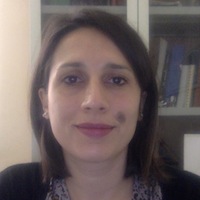 Angela Sara Cacciapuoti
Angela Sara Cacciapuoti
University of Naples, Italy
Angela Sara Cacciapuoti received the Ph.D. degree in Electronic and Telecommunications Engineering with a qualification of excellent (highest score) in 2009, and the 'Laurea' (integrated BS/MS) summa cum laude (highest score) in Telecommunications Engineering in 2005, both from the University of Naples Federico II. Since April 2017, she held the Italian National Habilitation as "Associate Professor” in Telecommunications Engineering. From 2012 to 2017, she has been a non-tenure-track Assistant Professor at the Department of Electrical Engineering and Information Technology, University of Naples Federico II. Prior to that, she was a visiting researcher at the Broadband Wireless Networking Laboratory, Georgia Institute of Technology (USA) and at the NaNoNetworking Center in Catalunya (N3Cat), School of Electrical Engineering, Universitat Politécnica de Catalunya (Spain). She received different awards including the elevation to the grade of IEEE Senior Member in February 2016, the Most Cited Ad Hoc Networks Articles since 2010, 2011 and 2012 awards, the ScienceDirect TOP 25 most downloaded articles for Ad Hoc Networks awards, and outstanding young faculty/researcher fellowships for conducting research abroad. Her current research interests are in Cognitive Radio Networks, 5G Networks and Quantum Communications. She authored over forty refereed papers in the first tier IEEE journals and the ComSoc flagship conferences. She served as journal Guest Co-Editor for different special issues and on the technical program committee of several leading IEEE conferences in wireless communications and networking. Currently she serves as Editor for the journals: IEEE Trans. on Communications, IEEE Communications Letters and Computer Networks (Elsevier) Journal; moreover, she serves as Associate Editor for IEEE Access. Dr. Cacciapuoti has been an appointed member of the IEEE ComSoc Young Professionals Standing Committee since 2016. She served as the Award Committee Chair of the 2016 IEEE ComSoc Best YP Awards. Since 2017, she has been appointed as the Award Co-Chair of the N2Women Board. Since 2017, she has been an elected Treasurer of the IEEEWomen in Engineering Afnity Group of the IEEE Italy Section.
Abstract:
This tutorial aims at providing the participants with a wide view about quantum networks and the unique challenges for transmitting quantum information. First, the importance of quantum communications will be highlighted, by reviewing the very last efforts, from both Industry and Academia, toward the design of quantum computing and quantum networking. Then, the physical mechanisms underlying quantum networks, such as entanglement, no-cloning theorem, teleportation, etc., as well as the quantum bra-ket notation will be gently introduced. Furthermore, the unique implications of these physical mechanisms on quantum networks design will be presented and discussed, with emphasis on the network layer. Moreover, the quantum mechanisms underlying a quantum network, such as quantum repeater, entanglement swapping and entanglement purification, and their impact on the design of a quantum routing protocol will be discussed. Finally, a review of the existing open problems and possible research directions conclude the tutorial.
Tutorial #2: Intent-based Network Programmability
8:30 - 12:30 | Room: Laughlin I
Instructors:
 Franco Callegati
Franco Callegati
University of Bologna, Italy
Franco Callegati is an associate professor of telecommunication networks at the University of Bologna, Italy. His research interests are in the field of teletraffic modeling and performance evaluation of telecommunication networks. He is currently working on performance evaluation and experimental validation of SDN/NFV-based networking solutions. He has been active in EU- funded research projects since FP4, where he led activities and participated in various steering committees.
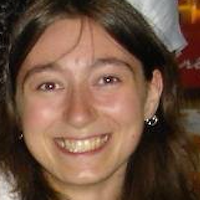 Chiara Contoli
Chiara Contoli
University of Bologna, Italy
Chiara Contoli is a Post-doc Researcher at the University of Bologna, Italy, where she obtained her Ph.D. degree in 2017. She was a research scientist at the Network Research Laboratory of the University of California at Los Angeles, USA, where she worked on content delivery networks for automotive applications to complete her Master’s thesis. In 2016 she was visiting the Computer Science Department at Saint Louis University, USA. Her research interests are in programmable networks, SDN, NFV, and more generally in advanced networking architectures.
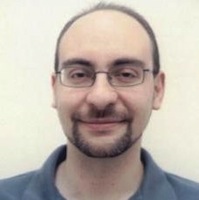 Walter Cerroni
Walter Cerroni
University of Bologna, Italy
Walter Cerroni is an assistant professor of communication networks at the University of Bologna, Italy. His most recent research interests include: definition, implementation, and performance evaluation of intent-based northbound interfaces for programmable SDN/NFV infrastructures; design, implementation, and performance evaluation of virtual network function chaining in cloud computing platforms (e.g. OpenStack); modeling and design of inter- and intra-data center interconnection networks for cloud computing infrastructures; design of programmable, software-defined hybrid optical network architectures. He has contributed to several national and international research projects. Walter Cerroni is currently serving as Associate Technical Editor for IEEE Communications Magazine and Associate Editor for IEEE Communications Letters. Recently, he has co-chaired two IEEE ICC/Globecom symposia, four workshops on SDN/NFV-related topics, and has served as Publication Co-Chair for IEEE NetSoft 2017 and IEEE NFV-SDN 2017. He is a Senior Member of the IEEE.
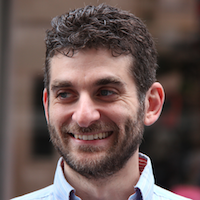 Flavio Esposito
Flavio Esposito
St. Louis University, USA
Flavio Esposito is an Assistant Professor in the Computer Science Department at Saint Louis University (SLU). He received his Ph.D. in Computer Science at Boston University in 2013, and his MS in Telecommunication Engineering from University of Florence, Italy. His research interests include network management, network virtualization and distributed systems. Prior to joining SLU, Flavio worked in the R&D group at Exegy, an high-frequency trading company in St.Louis, MO, and as a visiting researcher at Alcatel-Lucent, Italy, at Bell Laboratories, NJ, at Raytheon BBN Technologies, MA, at EURECOM, France and at the Center for Wireless Communications, Oulu, Finland. Flavio is recipient of two National Science Foundation awards.
Abstract:
The tutorial will introduce and explain the “intent-based” network programmability concept. Recently, network programmability received a lot of attention from both academia and industry, and the first ready-to-market solutions are now emerging. The concept of network programmability stems from the increasingly dominant role that software aspects are taking in modern communication infrastructures, fostered by the unprecedented combination of several technological paradigms that evolved significantly in recent years, such as virtualization, Cloud Computing, Software Defined Networking, Network Operating System, Network Function Virtualization, etc. Similarly to what happened in the computing field, one of the most relevant key enablers to efficient network programmability will be the adoption of proper abstraction models. Abstractions will allow network operators and service providers to “think out of the box” and focus on high-level resource management and service description issues, instead of taking care of
technology-specific and vendor-dependent details for network service deployment.
Tutorial #3: Low Power Wide Area Networks
8:30 - 17:30 | Room: Laughlin II
Instructor:
 Lorenzo Vangelista
Lorenzo Vangelista
University of Padova, Italy
Lorenzo Vangelista was born in Bassano del Grappa on February 21th 1967. He received the “Laurea” degree in 1992 in Electronics Engineering and the Ph.D. degree in Telecommunications and Electronics Engineering in 1995, both from Padova University, Padova, Italy. He has been with CSELT (now Tilab, in Turin, Italy), from 1995 to 1996, doing research on optical networks and techno-economic evaluations. He joined then Telit Mobile Terminals (Trieste, Italy) at the end of 1996 as a GSM layer 1 designer, leaving on 2001 when he was head of the advanced developments department, doing research on second and third generation mobile telephony, from physical layer to protocol and services implementation. In 2002, he joined Microcell A/S (Copenhagen, Denmark) where he started from scratch a design center for 2.5G mobile phones, working for major brands and reaching 90 employees in the middle of 2003. He joined then the worldwide organization of Infineon Technologies where he worked as program manager for the first mass produced single GSM/GPRS single chip (including both baseband, protocol stack, applications and RF processing) in CMOS. Since October 2006 he is an associate professor at Padova University, Department of Information Engineering. His interests are in embedded system design, wireless communications, OFDM modulation, synchronization and channel estimation, Internet of Things and Smart Cities and, in particular, Low Power Wide Area Networks. Lorenzo Vangelista published several journal papers and conference papers, all peer reviewed. In January 2009, Lorenzo Vangelista, together with Prof. Michele Zorzi, established Patavina Technologies s.r.l, a spin-off company from Padova University focused on wireless sensor and actuators networks and especially in Low Power Wide Area Networks. In June 2017 the company has been acquired by A2A group, listed in the Italian stock exchange.
Abstract:
The tutorial will start by introducing quickly the current broad landscape of the wireless communication technologies for the IoT and Smart Cities including those based on IEEE 802.15.4 (ZigBee and LoWPAN and Thread) and IEEE 802.11 (with some emphasis on 802.11ah). Then the tutorial will move forward to highlight the shortcomings of these technologies, having in mind the services which can be offered in Smart City, Home and industrial environments. Afterwards, the major LPWA technologies will be introduced, including NB-IoT, SigFox, Lo-RA, Ingenu and Neul. The benets and drawbacks of using such a kind of technologies will be examined in general. The NB-IoT, SigFox and Lo-Ra solutions (the three more widely adopted at the moment) will be described, focusing more in detail on the Lo-Ra systems, including the physical layer (including the first detailed description of the physical layer of LoRa), the protocol and the security architecture. This will constitute the core of the tutorial. Finally a review of the current standardisation efforts in IETF and IEEE 802 will be given.
Tutorial #4: Connected Vehicles in the 5G Era
8:30 - 12:30 | Room: Laughlin III
Instructor:
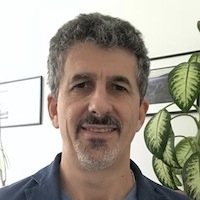 Claudio Casetti
Claudio Casetti
Politecnico di Torino, Italy
Claudio Casetti received the Dr.Ing. and Ph.D. degrees in Telecommunications Engineering from the Politecnico di Torino, Torino, Italy, in 1992 and 1997, respectively. He is currently an Associate Professor in the Department of Control and Computer Engineering, Politecnico di Torino. He was a visiting scholar at Umass (1995), UCLA (2000), UCSD (2003) and a Visiting Professor at Monash University (Australia) in 2012 and 2016. His research interests include 5G networks and vehicular networks.
Abstract:
The road is being paved right now to enact the vision of connected cars, leveraging efforts that have been going on since the beginning of this century, especially within IEEE and ETSI. Now, the upcoming 5G technology is expected to be a game changer for vehicular communication, with the automotive sector having already secured its place among the most prominent verticals. The possibility for vehicles to be connected to other vehicles, pedestrians, roadside infrastructure or application servers, enables the development of safety services as well as multiple revolutionary applications such as fully automated or remote driving. Additional use cases embrace the wider area of Intelligent Transportation Systems (ITS). The traditional approach through Dedicated Short Range Communication (IEEE 802.11p/DSRC) is being challenged by new paradigms that are often referred to as Cellular Vehicle-to-Everything (C-V2X), a technology concept that features prominent roles for cellular standards in a wide range of vehicle connectivity use cases and applications. A viable C-V2X technology implementation will be possible in 2017 with 3GPP Release 14, shoehorning C-V2X support in 5G networks. This Tutorial will cover both the state-of-the-art of vehicular communication and networking, from the point of view of protocols and regulations, as well as the most recent proposals in the context of C-V2X along with the requirements for the novel use cases they are ushering. Overall, the Tutorial will provide a comprehensive view of how inter-vehicular communication will fit into the broader 5G landscape.
Friday, January 12 (afternoon)
Tutorial #5: Towards Programmable Mobile Networks and Network Slicing
13:30 - 17:30 | Room: Reno
Instructor:
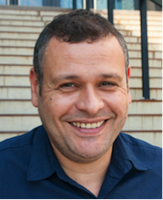 Adlen Ksentini
Adlen Ksentini
EURECOM
Adlen Ksentini received his M.Sc. degree in telecommunication and multimedia networking from the University of Versailles Saint-Quentin-en-Yvelines, and his Ph.D. degree in computer science from the University of Cergy-Pontoise in 2005, with a dissertation on QoS provisioning in IEEE 802.11-based networks. From 2006 to 2016, he worked at the University of Rennes 1 as an assistant professor. During this period, he was a member of the Dionysos Team with INRIA, Rennes. Since March 2016, he has been working as an assistant professor in the Communication Systems Department of EURECOM. He has been involved in several national and European projects on QoS and QoE support in future wireless, network virtualization, cloud networking, mobile networks, and more recently on Network Slicing and 5G in the context of H2020 projects 5G!Pagoda and 5GTransformer. He has co-authored over 100 technical journal and international conference papers. He received the best paper award from IEEE IWCMC 2016, IEEE ICC 2012, and ACM MSWiM 2005. He has been awarded the 2017 IEEE Comsoc Fred W. Ellersick (best IEEE communications Magazine’s paper). Adlen Ksentini has given several tutorials in IEEE international conferences, IEEE Globecom 2015, IEEEE CCNC 2017, IEEE ICC 2017, IEEE/IFIP IM 2017. Adlen Ksentini has been acting as TPC Symposium Chair for IEEE ICC 2016/2017, IEEE GLOBECOM 2017, IEEE Cloudnet 2017 and IEEE 5G Forum 2018. He has been acting as Guest Editor for IEEE Journal of Selected Area on Communication (JSAC) Series on Network Softwerization, IEEE Wireless Communications, IEEE Communications Magazine, and two issues of ComSoc MMTC Letters. He has been on the Technical Program Committees of major IEEE ComSoc, ICC/GLOBECOM, ICME, WCNC, and PIMRC conferences. He is currently the Vice-Chair of the IEEE COMSOC Technical Committee on Software (TCS).
Abstract:
Several ongoing research and deployment scenarios envision the use of SDN to manage mobile network. Each scenario brings new ideas and challenges to accommodate SDN concepts to mobile network. This tutorial will present recent advance on the use of SDN in 4G and beyond (5G). It will shed light on the advantage of using SDN in mobile network, and the related challenges and issues. The tutorial begins by reviewing the different mobile systems defined by 3GPP, including the Evolved Packet Core (EPC) and Radio Access Networks (RAN). After a short discussion on the basic principles of LTE, the tutorial presents the major architectural enhancements that have been already standardized within 3GPP for supporting Evolved Packet System (EPS). The tutorial will be afterwards touching the ongoing advances in SDN. A particular focus will be done on the current technologies around SDN controllers and the different available APIs (Southbound and Northbound). The tutorial will then review and discuss several use-cases and architectures to introduce SDN in mobile network to manage EPC and RAN, presenting the advantage and inconvenient of each solution in term of performances and implementation. The tutorial will also present the ongoing solutions to combine SDN and Network Function Virtualization (NFV) to enable the programmability of the mobile network architecture, and ease the deployment of Mobile Edge Concept (MEC) and Network Slicing. The tutorial will discuss implementation results of SDN, MEC and Network Slicing on Open Air Interface (OAI) (Open Source of 4G EPC and eNodeB).
Tutorial #6: Virtualization of Internet of Things (IoT) and Big Data Paradigm in Consumer Applications
13:30 - 17:30 | Room: Laughlin I
Instructors:
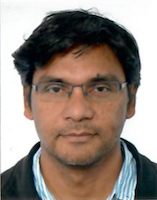 Abdur Rahim Biswas
Abdur Rahim Biswas
CreateNet
Dr. Abdur Rahim is a senior research staff in smart IoT group at CREATE-NET, Italy. He is project co-ordinator of WAZIUP, an Open Sources IoT and Big data Platform for Africa. He is also the technical manager of iKaaS (create-net.fbk.eu). an IoT, big data and Cloud project funded by EU and Japan. He was also the project manager of EU large-scale integrated Internet of Thing (IoT) project iCore (www.iot-icore.eu) for empowering Internet of Thing through cognitive technologies. He serves as technical working group leader of several EU projects and European cluster activities. He is very active in IoT since 2006 starting with sensors network. He delivery talks in many conference, events, meeting, etc. Dr.-Ing Biswas organized many technical/panel session and workshop at different international events like ICC, CROWNCOM, ICT Mobile Summit, EU RAS, etc., He involved in many activities related to cognitive technologies, steering committee co-chair (CROWNCOM), management board member of COST-TERRA, Co-Chair of SIB European Alliance for Innovation.
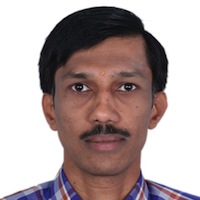 R. Venkatesha Prasad
R. Venkatesha Prasad
Delft University of Technology, The Netherlands
R Venkatesha Prasad (SM 2012, DL 2017) received his bachelors degree in Electronics and Communication Engineering and M.Tech degree in Industrial Electronics from University of Mysore, India in 1991 and 1994. He received a Ph.D. degree in 2003 from Indian Institute of Science, Bangalore India. During 1996 he was working as a consultant and project associate for ERNET Lab of ECE at Indian Institute of Science. While pursuing the Ph.D. degree, from 1999 to 2003 he was also working as a consultant for CEDT, IISc, Bangalore for VoIP application development as part of Nortel Networks sponsored project. In 2003 he was heading a team of engineers at the Esqube Communication Solutions Pvt. Ltd. Bangalore for the development of various realtime networking applications. Currently, he is a part time consultant to Esqube. From 2005 till date he is a senior researcher at Wireless and Mobile Communications group, Delft University of Technology working on the EU funded projects MAGNET/MAGNET Beyond and PNP-2008 and guiding graduate students. He is an active member of TCCN, IEEE SCC41, and reviewer of many IEEE Transactions and Elsevier Journals. He is on the TPC of many conferences including ICC, GlobeCom, ACM MM, ACM SIGCHI, etc. He is the TPC co-chair of CogNet workshop in 2007, 2008 and 2009 and TPC chair for E2Nets at IEEE ICC-2010. He is also running PerNets workshop from 2006 with IEEE CCNC. He is the Tutorial Co-Chair of CCNC 2009, 2011, 2012 and Demo Chair of IEEE CCNC 2010, 2012 and 2013 and publicity chair for 2014. He is the secretary of IEEE ComSoc Standards Development Board and member of Standards Program Development Board. He is an Associate editor of Transactions on Emerging Telecommunications Technologies and on reviewer panel of IEEE ComST.
Abstract:
Internet of Things (IoT) has been making waves and is permeating into the everyday life of people. All the smart-* applications are built around IoT. This tutorial will provide an overview of IoT first and then discuss various dimensions of IoT including the practical challenges. These include IoT long-range networking (LORA), architecture framework including gateway and software platform, open horizontal platform, explaining all components from bottom up (i.e. from the things with focus on sensors and interconnection of the things). The open horizontal platform is being developed to solve the interoperability problem of the Internet of Things. It provides a layer of system abstractions and APIs to enable application software to interact with a diverse set of IoT resources and protocols.
This tutorial will describe the Interoperability problem in the context of today’s ubiquitous Machine to Machine communication, describing different communication protocols, long-distance LORA network, and describes web-standards based techniques to connect the multitude of Silos together using common data models and system abstractions. Some examples of data integration across different data sources are shown in the context of user applications. Further focus on the different enabling technologies like real world objects virtualization, cognitive and autonomic technologies, real-world knowledge proofing, objects networking, harvesting technologies, etc. The tutorial will also provide several IoT applications for the developing nations using examples from Africa.
Tutorial #3: Low Power Wide Area Networks (continued)
13:30 - 17:30 | Room: Laughlin II
Monday, January 15 (morning)
Tutorial #7: Classification, Solutions, and Challenges of Denial of Service Attacks on the Smart Grid
8:30 - 12:30 | Room: Reno
Instructor:
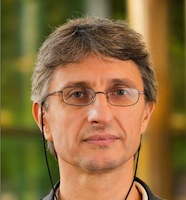 Suleyman Uludag
Suleyman Uludag
University of Michigan, USA
Suleyman Uludag is an Associate Professor of Computer Science at the University of Michigan - Flint. His research interests have been around secure data collection, Smart Grid communications, Smart Grid privacy, Smart Grid optimization, demand re-sponse bidding privacy, Denial-of-Service in the Smart Grid, cybersecurity education and curriculum development, routing and channel assignment in Wireless Mesh Networks, Quality-of-Service (QoS) routing in wired and wireless networks, topology aggregation.
Abstract:
The overarching goal of this tutorial is to present the emerging Denial-of-Service (DoS) vulnerabilities, attacks taxonomy, challenges, and solutions in the Smart Grid. Unprecedented initiatives have recently been instituted around the world to ameliorate the electric grid with the Smart Grid (SG). The conception of the Smart Grid (SG) paradigm is to offer many benefits to the transmission, distribution, and consumption of energy.
According to NIST Guidelines for Cybersecurity, availability, the main target of DoS attacks, is the most important security objective for power system reliability. DoS attacks disrupting the Internet traffic have already cost billions of dollars world-wide. With the increasing connectedness of power grid systems, a DoS attack to the grid infrastructure causing a major power failure becomes quite possible and could be undoubtedly more harmful and costly. This is because in modern society electricity is a utility we depend mightily not only for communication but also for many other life-critical purposes. It is in this framework that we are proposing to present a structured, methodical, holistic, and comprehensive view of the availability dimension of the Smart Grid cybersecurity issues, threat models, existing solutions, and remaining challenges and research problems.
Tutorial #8: A First-Principles Approach to Computer Networking
8:30 - 12:30 | Room: Laughlin I
Instructor:
 Joe Touch
Joe Touch
Independent Consultant
Joe Touch recently joined the Aerospace Corporation as its Senior Distributed Systems Data Architect and also serves as an independent consultant. He was previously with the University of Southern California’s (USC) Information Sciences Institute for over 25 years, most recently as its Postel Center Director a Research Associate Professor in USC's Computer Science and EE/Systems Departments. He received a B.S. in biophysics and CS from the Univ. of Scranton in 1985, an M.S. in CS from Cornell Univ. in 1987, and a Ph.D. in CS from the Univ. of Pennsylvania in 1992. His interests include network and distributed systems architecture, virtual networks, optical computing, optical communication processing, and high-performance network security. He holds 5 US patents and has published over 150 papers in conferences and journals. Joe is in Sigma Xi, an ACM Distinguished Scientist, an IEEE Senior Member and Communications Society Distinguished Lecturer, and an OSA Senior Member, Traveling Lecturer, and Nonlinear Optics TG chair. He is active in the IETF in the Transport, Internet, and Security Areas, and served on numerous conference committees. His “first principles approach to computer networking” course, which forms the basis of this lecture, is based on his Recursive Network Architecture and is under development as a textbook and has been taught at both USC and UCLA.
Abstract:
This tutorial presents a new “first principles” approach to computer networking now being taught at USC. It is based on fundamental principles that evolved from USC/ISI’s experience developing virtual networks and recursive networking. Past approaches focus on a protocol architecture that was developed in the 1970s by the international organization of telephone companies (the ITU) called Open Systems Interconnect (OSI). The OSI model was never widely deployed, yet it remains the basis of our network teaching. It describes a seven-layer architecture, but why those seven? Why exactly seven? Most computer networking texts explore past and present examples of networks by either assembling them bottom-up or disassembling them top- down. This tutorial explains a new approach to presenting computer networking that goes beyond construction and destruction towards fundamental understanding.
Tutorial #9: Scalable Approaches to Network Protocol and Architectures Design in New Generation Wireless Systems: Current State and Future Directions
8:30 - 12:30 | Room: Laughlin II
Instructor:
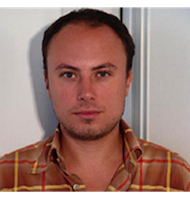 Floriano De Rango
Floriano De Rango
University of Calabria, Italy
Floriano De Rango, in October 2000 he got is Master Degree Thesis cum laude in Electrical and Computer Science Engineering at University of Calabria. ITALY.He was visiting Ph.d students at UCLA in 2014, Politecnica del Valencia (UPV) in 2007, Aalborg University in 2009. He was recipient of Young Researcher Award in 2007 for a Project on Vehicular Ad Hoc Networks (VANETs) called ATENA (Autoconfiguring inTelligent vEhicular Network for urban Area). His interests include Satellite networks, IP QoS architectures, Adaptive Wireless Networks, Ad Hoc Networks and Pervasive Computing. He has been involved in the organization of many conferences in the following roles: Program Chair of Ambysis Conference in 2009, track chair in Mobile Ad Hoc Networks in Wireless Telecommunications Symposium (WTS) 2011, Program chair in Simulation and Performance Evaluation in Telecommunication Systems (SPECTS) 2013-2014, track-chair of the Wireless Networks track in Wireless Days 2013 in Valencia, member of the Organizing Board of KTTO 2014 Conf., in Ostrawa, Czeck Repubblic, vice-General Chair in Summer Simulation Conference (SCS) 2015 in Chicago, track-chair of Wireless Communications track in CCNC 2015 in Las Vegas, General Chair in Summer Simulation Conference (SCS) 2016 in Montreal, Canada, Program Chair in 1st International Conference on Smart Electric Vehicles and Vehicular Ad-hoc NETworks (SevNet), 2016, Bratislava, Slovakia, Program Chair in ICCMIT 2016, Rende (CS), Italia.
He co-authored till now more than 200 papers in International Conferences and Journals. He is also in the Review Board of a newly published Journal (IGI Pubblication) called Interdisciplinary Issues in Telecommunication Systems, in International Journal of Communications Systems (IJCS) (Wiley), International Journal of Digital Multimedia Broadcasting (Hindawi Pubblisher, Open Access Journal)., International Journal of Distributed Sensor Networks (Hindawi). He founded two start-up companies: Spintel Ltd and Thunderbit Ltd. The first one that works in the field of Internet of Things and Smart Control for Home and Building Automation has been ranked as one of the top 20 promising startups in the Intel Business Challenge Competition in 2013. The second company works in the field of the broadband wireless networks and advanced services for Smart Cities.
He is currently Associate Prof. of Telecommunication and Networking at DIMES Dept., University of Calabria, ITALY.
Abstract:
In the proliferation of wireless communications and technologies, new protocol design paradigms need to be considered in order to offer scalable solutions in the traffic management, in the mobility support, in the energy management and security solutions. New generation of Mobile Ad Hoc Networks (MANETs) such as Wireless Sensor Networks (WSN) such as Internet of Things and future 5G Systems need to be managed applying novel scalable techniques and considering novel adaptive and scalable protocol design. Sometimes it is not easy understand how to obtain this scalability especially considering different metrics or parameters to be accounted such as protocol overhead, energy constraints, number of interactions, QoS constraints and so on. The present tutorial tries to consider in an holistic way the scalability issues related to the design of some wireless systems such as MANET, WSN, 5G, IoT Systems, ICT aware ITS. The scalability is considered from the mobility management perspective, the QoS management, security management and energy management. Novel technologies such as Delay Tolerant Network (DTN), Opportunistic Networks, Social aware Networks will be considered as inspiring technologies to improve the scalability of the other Wireless Systems and novel bio-inspired techniques will be presented to emphasize as the Nature inspired protocol and algorithms can improve the protocol design and the network management offering interesting scalable solutions.


